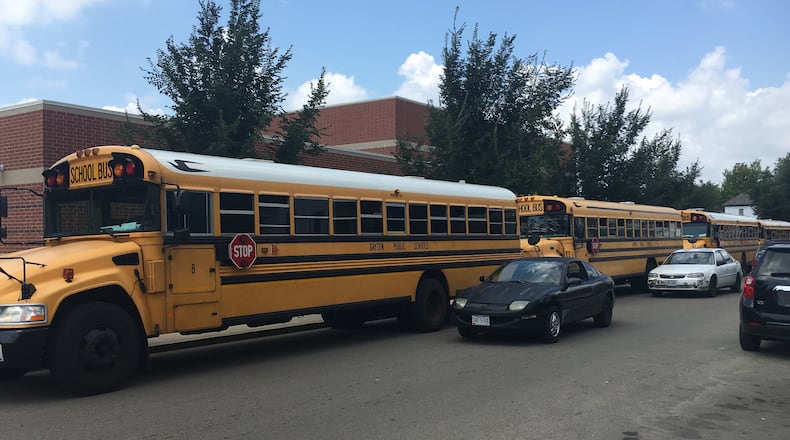DPS officials said this weekend that an initial letter to families stating that RTA passes would not be purchased was incorrect.
Students who ride RTA buses to school will have to rely on RTA’s regular routes — DPS officials said the more specifically tailored “limited service” routes to schools that were in place in 2019-20 will not be back this fall. It is not clear how RTA’s recent reduction in the number and frequency of bus routes will affect students’ ability to get to and from Dayton high schools.
Elementary and middle-school students are eligible for busing to schools within the same quadrant where they live, as long as they live 1.5 miles or more away from the school. There are exceptions for students whose individualized education plan requires transportation, and for those attending a district-wide school (River’s Edge, Charity Earley and grades 7-8 at Stivers).
Just one year ago, Dayton Public Schools signed a three-year, $17 million contract with First Student, with that contractor taking over busing of all the charter and private school students DPS is responsible for, leaving the school district to handle all students at DPS schools on its own yellow buses.
The new plan, announced last week in a letter to district families, says the First Student contract has been canceled already. That means any students who do receive bus service — whether to DPS schools, charters or private schools — will get it from DPS’ own transportation department.
“The First Student contract was mutually dissolved,” Superintendent Elizabeth Lolli told the Dayton Daily News on Monday. “With the new requirements for (student delivery) time and the penalties associated with it, it was determined that DPS needed to bus all students.”
A change in Ohio law that went into effect last fall requires school districts “to deliver students in preschool through grade 12 to their schools no earlier than 30 minutes before the start of the school day and to pick up no later than 30 minutes after the close of the school day,” according to the Ohio Department of Education.
Consistent noncompliance can subject school districts to financial consequences.
Like many other districts, DPS has struggled to find enough bus drivers to achieve consistent on-time performance. Unlike other local schools, DPS has nearly 10,000 charter and private school students in addition to its own kids, thousands of whom rely on DPS for rides from their homes to a maze of five dozen non-DPS schools with varying start and end times.
“DPS would like to continue busing high school students,” Lolli said. “However, in taking all the charters and parochials back, it is not possible with the number of drivers available.”
Lolli said one of the reasons DPS began busing high school students in 2019 was to boost school attendance. But she said attendance did not improve.
DPS’ quadrant system — requiring most students to attend one of the schools in the quadrant of the city where they live — will remain in place for most elementary and middle school students.
However, because high school students no longer figure into DPS’ busing plans, the district said students now may attend schools outside of their quadrant if they choose.
Lolli referred questions about the change in busing cost to the DPS treasurer’s office.
The school district is asking families to watch out for letters this summer providing bus route details and school bell schedules.
Anyone with questions can contact the Student Enrollment Center at 937-542-5555.
The Dayton school district has had difficulty with on-time busing performance for years, and has gone through several transportation directors and multiple new systems in the past five years, with little sustained success.
About the Author


